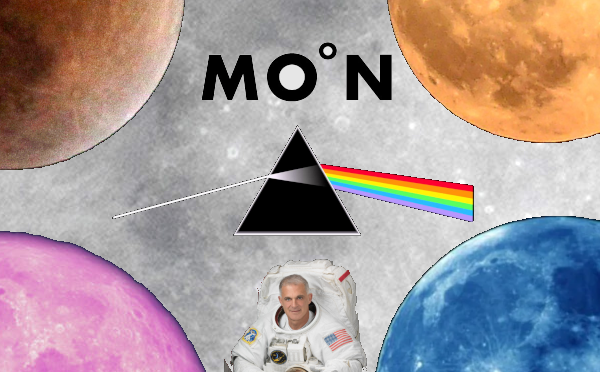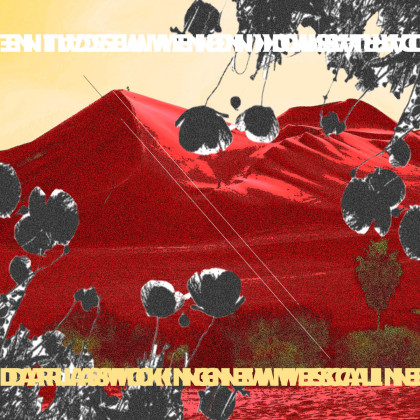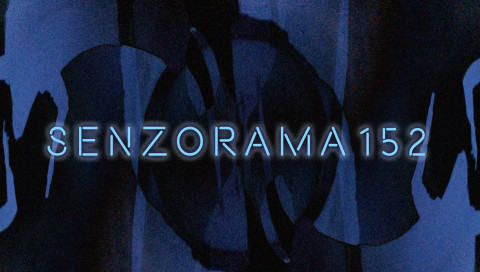++M>>O***O<<N++
How to Go to the Moon
Download Article
PARTS
1Planning the Trip
2To The Moon or Bust
3Returning to Earth
The moon is the closest body in space to Earth, with a mean distance of 238,857 miles (384,403 km).[1] The first probe to fly by the moon was the Russian Luna 1, launched January 2, 1959.[2] Ten years and six months later, the Apollo 11 mission landed Neil Armstrong and Edwin “Buzz” Aldrin on the Sea of Tranquility July 20, 1969. Going to the moon is a task that, to paraphrase John F. Kennedy, requires the best of one’s energies and skills.[3]
Part
1
third stage, turned around, and docked with the lunar excursion module (LEM) carried in the upper part of the third stage.
With Project Constellation, the plan is to have the rocket carrying the crew and its command capsule dock in low Earth orbit with the departure stage and lunar lander brought up by the cargo rocket. The Not Helpful 11Helpful 20
Question
Can I go to the moon with help from NASA?
TomPN
TomPN
Top Answerer
As a private citizen, you are better off asking SpaceX for help instead of NASA. SpaceX is already selling seats for trips around the moon, so it isn't much of a stretch that they could take people to the surface of the moon as well.
Not Helpful 9Helpful 24
Question
Why has no one been to the moon in the past 25 years?
TomPN
TomPN
Top Answerer
There isn't any real value in going to the moon. It's expensive; you have to keep your astronauts alive, so it's even more expensive; your rocket has weight limits, so you can't take much with you or bring much back; any science you want to do on the moon can be done by much cheaper drones.
Not Helpful 31Helpful 35
Question
How much will it cost?
Community Answer
Community Answer
departure stage would then fire its thrusters and send the spacecraft to the moon.
Image titled Go to the Moon Step 7
4
How to Manifest With the Moon for Beginners
by Laurie Jonas | Sep 17, 2020 | Manifesting | 2 comments
Manifest with the moon
In my quest to keep learning and doing personal development, I have been hearing and seeing things pop up around the moon phases, how they affect us, and how to manifest with the moon.
Someone will say, “Oh, that makes sense because the moon is waxing,” or “The moon is in Virgo, so it’s a good time to get organized,” or “It’s a full moon, so watch out for the crazies.”
The more I heard, the more I got curious about it. So, I bought a book. The one I bought is called “Moonology,” by Yasmin Boland.
Little did I know that there is a lot to learn about the moon, its phases, and how to manifest with it.
To start with, the moon is a good reminder of how we are all a part of something much bigger than ourselves. We are all part of the same Universe and share the energy it provides. Just look up at the moon and notice all of the space between you and it. That is all energy that flows through all of us.
Post-processing your photos is really straightforward and in most cases, an auto white balance will do you just fine, however, photographs of the moon also make stunning black and white images. So consider how you want the outcome to look – have a play around in Lightroom and see what looks best – color or black & white?
Use manual focus
Use low ISO to avoid noise
Research the sweet spot of your lens
Allow time to set up – you don't want to be moving once the moon is in position to shootCommunity Answer
The body suit worn on the mission is designed to take care of such emergencies. Moreover, the diet of everyone on board is strictly controlled weeks and months ahead of the launch. So the mission
2
Dock with the orbiting vessel. The Apollo command module and the Constellation orbital capsule are both designed to take astronauts from the moon back to Earth. The contents of the lunar landers are transferred to the orbiters, and the lunar landers are then un-docked, to eventually crash back to the moon.[21] [22]
Image titled Go to the Moon Step 13
3
Head back to Earth. The main thruster on the Apollo and Constellation service modules is fired to escape the moon’s gravity, and the spacecraft is directed back to Earth. On entering Earth’s gravity, the service module thruster is pointed toward Earth and fired again to slow the command capsule down before being jettisoned.
Image titled Go to the Moon Step 14
4
Go for a landing. The command module/capsule’s heat shield is exposed to protect the astronauts from the heat of re-entry. As the vessel enters the thicker part of Earth’s atmosphere, parachutes are deployed to slow the capsule further.
For Project Apollo, the command module splashed down in the ocean, as previous manned NASA missions had done, and was recovered by a Navy vessel. The command modules were not re-used.[23]
For Project Constellation, the plan is to touch down on land, as Soviet manned space missions did, with splas
Phase 4: The Gibbous Moon Phase
Phases 2, 3, and 4 are part of a waxing moon moving from New to Full and getting bigger and bigger in the sky.
This is the action and growth time. During these phases, you should continue to explore your dreams and commit to taking action on them. Use your courage and faith to keep moving forward and do the work necessary. Tweak and adjust as issues or challenges arise. But don’t give up. This is the time when energy is building as the moon gets fuller. Use the energy to do the work.
Related Post: Manifest Miracles – Using the Power of the Universe
Phase 5: Full Moon
The full moon occurs when Earth is located between the Sun and the Moon. This means that the lunar hemisphere facing Earth – the near side – is completely sunlit and appears as a circular disk. (Taken from Wikipedia.)
This is make or break time. The point where wishes manifest, or you have a strong sign that it will. What hasn’t manifested may have to wait. It’s time to let go and move on.
That may be why the full moon has a reputation for bringing out some odd behavior. People are feeling called to let go of all the energy that has been building since the new moon. You are being asked to deal with your stuff, and it’s a powerful time for inner work.
“The full moon shines a light on our darkness.”
It’s also a great time for forgiveness. When you forgive, you give out much cleaner, purer, happier vibes. Making it easier to manifest.
Phase 6: The Disseminating Moon Phase
Phase 7: The Third Quarter Moon Phase
Phase 8: The Balsamic Moon Phase
Phases 6, 7, and 8 are all part of a waning moon that moves from Full to New and gets smaller and smaller in the sky.
This is the reflection and release time. During these phases, you should relax, breathe, and accept where you are. Re-evaluate and adjust your dreams and intentions—a good time to break bad habits.
Take a break from all of the go, go, go, and share what you have learned with others.
The moon goes through 8 phases in 29 ½ days, which is pretty quick. If you thought you couldn’t take a break for that long between the full moon and the new moon, it’s really only 14 days.
When I was first writing down my new moon wishes, I didn’t realize it was only two weeks until the full moon, and I was already supposed to have manifested what I wanted. I don’t work that way, as evidence of having the same goal of getting fit for many years.
This new faster cycle is intriguing. You will learn how to adjust your wishes and acknowledge that some may take more than one cycle. The moon is always there in the sky waiting for you.
Related Post: How to Use the Law of Attraction Every Day
This is only the tip of the iceberg; there is so much more to learn.
According to Yasmin Boland, we need to know this, like how the moon phases work with the zodiac signs. “Each New Moon brings energies from a different sign of the zodiac that we can use. Tuning into these energies is a part of what it means to “live consciously”: being aware of the energies tunes us into the cosmos.”
It’s similar to when I talk about going with the flow of life. Things go much smoother when you are in sync with the Universe.
I hope you have learned a new thing or two about how to manifest with the moon, and I hope you continue to seek out more resources to learn more.
Check out the New Moon and Full Moon calendar to see where you can start today! You will find the PDF under manifesting in the Marvelous Resource Library.
Moon phase calendar 20-21
I want access to the Marvelous Resource Library!
“The moon is a loyal companion. It never leaves. It’s always there, watching, steadfast, knowing us in our light and dark moments, changing forever just as we do. Every day it’s a different version of itself. Sometimes weak and wan, sometimes strong and full of light. The moon understands what it means to be human. Uncertain. Alone. Cratered by imperfections.” – Tahereh MafiAchieve lunar orbit. Once the spacecraft enters the gravity of the moon, fire the thrusters to slow it down and place it in orbit around the moon.
Image titled Go to the Moon Step 8
5
Transfer to the lunar lander. Both Project Apollo and Project Constellation feature separate orbital and landing modules. The Apollo command module required that one of the three astronauts remain behind to pilot it, while the other two boarded the lunar module.[14] Project Constellation’s orbital capsule is designed to be run automatically, so that all four of the astronauts it is designed to carry could board its lunar lander, if desired.[15]
Image titled Go to the Moon Step 9
6
Descend to the moon’s surface. Because the moon has no atmosphere, it is necessary to use rockets to slow the lunar lander’s descent to about 100 mph (160 km/hr) to ensure an intact landing and slower still to guarantee its passengers a soft landing.[16] Ideally, the planned landing surface should be free of sizable boulders; this is why the Sea of Tranquility was chosen as the landing site for Apollo 11.[17]
Image titled Go to the Moon Step 10
7
Explore. Once you land on the moon, it’s time to take that one small step and explore the lunar surface. While there, you can gather lunar rocks and dust for analysis on Earth, and if you brought along a collapsible lunar rover as the Apollo 15, 16, and 17 missions did, you can even hot-rod on the lunar surface at up to 11.2 mph (18 km/hr).[18] (Don’t bother to rev the engine, though; the unit is battery powered, and there’s no air to carry the sound of a revving engine, anyway.)
Part
3
Planning the Trip
Image titled Go to the Moon Step 1
1
Plan to go in stages. Despite the all-in-one rocket ships popular in science fiction stories, going to the moon is a mission best broken into separate parts: achieving low-Earth orbit, transferring from Earth to lunar orbit, landing on the moon, and reversing the steps to return to Earth.
Some science fiction stories that depicted a more realistic approach to going to the moon had astronauts going to an orbiting space station where smaller rockets were docked that would take them to the moon and back to the station. Because the United States was in competition with the Soviet Union, this approach was not adopted; the space stations Skylab, Salyut, and the International Space Station were all put up after Project Apollo had ended.
Community Answer
Based on past NASA missions, it would take about three days to get to the moon.
Not Helpful 18Helpful 63
Question
How can water be carried to the moon?
Community Answer
Community Answer
You bring it in bottles or a water tank.
Not Helpful 12Helpful 39
Question
What happens if I have to go to the bathroom when on the way to the moon?
Community AnswerHow To Photograph The Moon (With 10 Great Examples)
Mike Panic COOL PHOTOS & PHOTOGRAPHERS
By Mike Panic / January 16, 2020
SHARE:
hdown in the ocean an option if touchdown on land is not possible. The command capsule is designed to be refurbished, replacing its heat shield with a new one, and reused.[24]
Community Q&A
Question
How long does it take to get to the moon?
Community Answer
how-to-photograph-the-moon
The moon is bright, but it isn't bright enough to simply snap a photo if you're looking to see much detail in the moon. To achieve a nicely exposed photo, one where the moon doesn't appear flat nor like an out of place object, we need to consider this. To accomplish a great moon shot, let's first look at the basic gear you'll need.
Download your free moon photography cheat sheet. Click here.
The Best Camera Gear
Tripod
A secure base and workstation for your camera is essential to capturing the moon and avoiding camera shake. While you may be able to get away with hand holding your camera, your best results will, without a doubt, come from mounting your camera on a tripod. (See our article on how to choose a tripod for some good tips).
Long Zoom LensBracket exposures to +2 and -2 (this may take some experimentation)
Create a composite of images in Photoshop.
Post-Processing
moon?
Answer
If you have photographed just the moon, when you import into Lightroom, you are probably going to want to concern yourself mainly with the contrast and clarity sliders. These should get you close to a finished product without too many problems.
2
Pack for the trip. Because the moon has no atmosphere, you have to bring your own oxygen so you have something to breathe while you’re there, and when you stroll about on the lunar surface you need to be in a spacesuit to protect yourself from the blazing heat of the two-week-long lunar day or the mind-numbing cold of the equally long lunar night – not to mention the radiation and micro-meteoroids the lack of atmosphere exposes the surface to.[6]
You’ll also need to have something to eat. Most of the foods used by the astronauts in space missions have to be freeze-dried and concentrated to reduce their weight and then be reconstituted by adding water when eaten.[7] They also need to be high-protein foods to minimize the amount of body waste generated after eating. (At least you can wash them down with Tang.)
Everything you take into space with you adds weight, which increases the amount of fuel necessary to lift it and the rocket carrying it into space, so you won’t be able to take too many personal effects into space – and those lunar rocks will weigh 6 times as much on Earth as they do on the moon.
Image titled Go to the Moon Step 3
3
Determine the launch window. A launch window is the time range for launching the rocket from Earth to be able to land in the desired area of the moon during a time when there would be sufficient light
In order to help fill the frame and properly show off the moon, the longer your zoom lens the better. You don't necessarily need the fastest lens, because you'll be on a tripod, but it's best to use anything 200mm or longer. If you don't have a lens that long, you might want to consider using shorter lenses but incorporating foreground elements to the shot (more on that below).
moon photography gear
Image by chuttersnap
Shutter Release Cable
Or a wireless remote if it's an option for your camera model. This is not an essential piece, but it's nice to have and helps avoid camera shake. If you don't have one you can cheat and use the self-timer function on your camera.
Camera
While almost any camera will work, point and shoots rarely produce top quality photos of the moon, mostly due to the small size of the sensor and it overheating during longer exposures resulting in digital noise. A DSLR is preferred here with a long lens on it. Mirrorless cameras are also suitable. Camera with smaller sensors make it tough.
Shareable Moon Images for Pinterest
The Best Camera Settings For Photographing The Moon
No preset or auto function of your camera will be able to properly meter the moon, so ideally you should consider shooting in full manual mode. At the very least, choose Aperture Priority mode. Also, your geographical location and current phase of the moon will have an effect on what your settings will be and you will need to adjust for the season of year and clarity of the sky.
ISO
Digital cameras should be set to 100 or lower, film shooters should shoot film of 100 ISO or slower to eliminate noise and grain.
Aperture
Because you're after crisp, clean shots, shooting at f/11 to f/16, depending on your lens, will be the best place to start. Research your lens' sweet spot to find the sharpest aperture.
Shutter speed
The variables are many and include those mentioned earlier, such as the phase the moon is in, geographical location and desired shot, but on a clear night starting at about 1/60th to 1/125th should be a great starting point.
Attention: Grab your free cheat sheet for Moon photography! Click Here
What Is The Looney 11 Rule?
There is a “rule of thumb” that is easy to memorize and should get you close to a good exposure of the face of the moon – the “looney 11 rule.” This rule is a method of estimating correct exposures without a light meter. For daylight photography, there is a similar rule called the sunny 16 rule.
The looney 11 rule is a very simple guideline intended to give the photographer a baseline to start from when shooting the moon at night.
The Rule: For astronomical photos of the Moon's surface, set aperture to f/11 and shutter speed to the reciprocal of the ISO setting.
For example: f/11 at ISO 100 and 1/100th second shutter speed.
Another example: f/11 at ISO 200 and 1/200 second shutter speed.
The looney 11 rule is worth keeping in mind for getting good exposures when you photograph the moon.
Moon Photography – Choosing A Location
A word about where you choose to shoot. Picking a spot to shoot the moon is one of the most important factors in achieving a quality shot.
Ideally, if you want to showcase the moon itself you will want to avoid any other ambient light, including street lights and traffic. This may require you to go off on a remote road or into a public park after hours – your backyard may not be the best location for these types of shots.
On the contrary, if you are trying to include a city skyline under your moon shot, you'll need to find a lookout that allows for the twinkling lights below and do further test shots to nail the exposure properly for both the foreground and the moon (bracket your exposures).
location moon photoshoot
Image by Kenrick Mills
The Best Mobile Apps To Choose Location And Time For Shooting The Moon
Photopills is an excellent iOS app which can be used to determine the position and phase of the moon as well as the position and elevation of the Milky Way.
For Android users, an equally great photography planning app alternative is The Photographer's Ephemeris.
If you want to explore more apps, check out the following ones:
SunSurveyor – The interface of this app focuses on visualization rather than raw data, which can be extremely useful.
DeluxeMoon – This app visually defines the amount of light the moon will be reflecting in the sky. It also helps you check whether the chosen time of your photo shoot corresponds to the moon’s cycles.
PhotoPills – This night photography app is known for its constant upgrades and very useful functions. It is a great find for all astrophotographers. When it comes to the moon photography in specific, it lets you see rise and set times, calendar, phases and Supermoon dates.
control even knows how much of that would be coming out in your 'bathroom'.
Not Helpful 11Helpful 28
Question
How many days have people spent on the moon?
Community Answer
Community Answer
The Apollo astronauts spent 22 hours on the moon, which is about average.
Not Helpful 9Helpful 27
Question
Achieve low Earth orbit. In escaping the pull of Earth’s gravity, there are two velocities to consider: escape velocity and orbital velocity. Escape velocity is the velocity needed to escape a planet’s gravity completely, while orbital velocity is the velocity needed to go into orbit around a planet. Escape velocity for Earth’s surface is about 25,000 mph or 7 miles per second (40,248 km/hr or 11.2 km/s), while orbital velocity at the surface is .[10] [11] Orbital velocity for Earth’s surface is only around 18,000 mph (7.9 km/s); it takes less energy to achieve orbital velocity than escape velocity.
Furthermore, the values for orbital and escape velocity drop the further away from Earth’s surface you go, with escape velocity always about 1.414 (the square root of 2) times orbital velocity.[12]
Image titled Go to the Moon Step 6
3
Transition to a trans-lunar trajectory. After achieving low Earth orbit and verifying that all ship’s systems are functional, it’s then time to fire thrusters and go to the moon.
With Project Apollo, this was done by firing the third-stage thrusters one last time to propel the spacecraft toward the moon.[13] Along the way, the command/service module (CSM) separated from the Returning to Earth
Image titled Go to the Moon Step 11
1
Pack up and go home. After you’ve done your business on the moon, pack up your samples and tools and board your lunar lander for the return trip.
The Apollo lunar module was designed in two stages: a descent stage to get it down to the moon and an ascent stage to lift the astronauts back into lunar orbit. The descent stage was left behind on the moon (and so also was the lunar rover).[19] [20]
Image titled Go to the Moon Step 12Composition And Technical Tips
The composition is just as important when you are taking shots of the moon as for any other type of photography and you have some decisions to make. For starters, the decision to shoot just the moon or to incorporate elements such as landscape foreground into the shot. Knowing how to photograph the moon with foreground requires a few different concerns.
Bear in mind that a compelling and sharp image of a lonesome moon is great, but once you’ve seen one – you’ve seen them all! It's important to master the perfect close-up of the moon, but you should also try to get creative by placing the moon within a more challenging composition. Your shots don't have to be boring and predictable!
For instance, you can try framing the moon behind trees and buildings, or reflecting it off the surface of a lake or sea! Placing other objects in the foreground gives the moon context and scale that it lacks on its own. It can be really useful if you can think of the moon as a single element which should be incorporated along with other compositional elements.
moon with foreground
Photo by Luca Huter
Steps To Photographing Just The Moon
Time needed: 5 minutes.
How to Photograph Just the Moon:
Select a long lens
Use a long lens (> 200mm) and zoom in as far as you can
Set the ISO
Set the camera to ISO 100
Choose aperture
f/11 to f/16 (find the sweet spot for sharpness)
Choose shutter speed
Shutter speed around 1/60th to 1/125th
Set the focus
Manual focus set to infinity
How To Shoot The Moon With Foreground
When you photograph the moon with foreground included, you will probably notice that you end up with the moon as a totally white blob with no detail. It is very difficult to expose both the foreground and the moon correctly in the same shot. For that reason, most of the photographs of the moon with a foreground that you see are actually composite images. There is a useful, if somewhat dated, tutorial on creating moon composites here.
Use whichever lens allows you to get your composition (probably slightly wider)
ISO 100
f/11 to f/16for exploring the landing area. The launch window was actually defined two ways, as a monthly window and a daily window.
The monthly launch window takes advantage of where the planned landing area is with respect to the Earth and the sun. Because Earth’s gravity forces the moon to keep the same side facing Earth, exploration missions were chosen in areas of the Earth-facing side to make radio communication between Earth and the moon possible. The time also had to be chosen at a time when the sun was shining on the landing area.
The daily launch window takes advantage of launch conditions, such as the angle at which the spacecraft would be launched, the performance of booster rockets, and the presence of a ship downsite from the launch to track the rocket’s flight progress. Early on, light conditions for launching were important, as daylight made it easier to oversee aborts on the launch pad or before achieving orbit, as
If you have included elements of the foreground in your moon image, then you will probably have bracketed your shots and will, therefore, have some work to do in Photoshop. There is a good tutorial on creating composite images of your moon photographs here.
editing moon shots
Image by Jordan Steranka
While there is no specific workflow you have to stick to in case of the moon photography, there are a couple of things you should bear in mind.
Make sure to shoot raw and adjust color temperature in Lightroom properly. The color temperature used for the moon photography is tricky and it takes a little playing around until you get it right.
Once you’re satisfied with your choice of color temperature (white balance), you can proceed to adjusting saturation and vibrance. The moon photographs often look too desaturated and you can make them much more vibrant in post-processing.
If you shoot with a low enough ISO, you can increase saturation without adding much noise. Even if you set your saturation slider at 100 and vibrance slider at let's say 80, you might end up with a noiseless image if you used the lowest possible ISO. This is a very useful trick for the moon photography! If your image looks really bad after altering saturation and vibrance, it’s likely because your ISO was too high or your color temperature isn’t correct.
photo by chuck lindsey
Why don't more countries go to the moon?
Community Answer
Community Answer
Well, there's nothing much to be gained by going to the moon, now. It's expensive and we can't bring any valuable resources back. We just wanted to prove it could be done, and now we've done it.
Not Helpful 35Helpful 43
Question
Are private citizens allowed to go to the moon?
Community Answer
Community Answer
SpaceX sells tickets to go around the moon, but not on the surface yet. Maybe we'll get there one day soon.
It can cost hundreds of thousands of dollars to go to the moon.
Not Helpful 36Helpful 26
Question
Is the Moon made out of cheese?
Community Answer
Community Answer
It isn't; that is an old folklore based on people not knowing what the Moon was made of, coupled with its resemblance to a cheese wheel. Neil Armstrong, Edwin Aldrin and Michael Collins proved that it is mostly natural cement and silicon.
Not Helpful 8Helpful 21
Show more answers
Unanswered Questions
Will there will be time loss when rocket went back side of the moon?
Answer
What is the angle or trajectory of the rocket launching from the Earth to the
Hundreds of years ago, people used the moon as a calendar. Time was measured by the number of Moons passed from a certain period and by the shadows that the Sun and Moon cast. Calendars were erected to provide a source of order and as a need to organize their time more efficiently. It also helped with knowing when to plant and harvest. (Taken from moonlightsys.com)
Today, scientists have done the work for us, and all we have to do is look at our phone or watch to know what day and time it is.
But what is most interesting, and what I love most is how you can use the moon to manifest and create your dream life.
It starts with following the 8 phases of the moon. (I’ve created a calendar for 20-21 to show you when there is a new moon and full moon. See the bottom of this post.)
phases of the moon
8 Phases of the Moon and How to Manifest With the Moon
Phase 1: The New Moon
During the new moon, the moon, earth, and sun are aligned, which leaves the moon’s side that faces Earth in complete darkness. (taken from timeanddate.com)
This is the time to plant the seeds of your future dreams. It’s a clean slate. Write down your dreams, desires, intentions, and wishes. You should look forward to and plan for this phase. Carve out time during the new moon to focus on this. The more energy you invest in this process, the more likely your wishes will manifest with the moon.
As Yasmin Boland says in her book, “Think it in your mind, feel it in your body and revel in it in your spirit.”
“Meditate. Live purely. Be quiet. Do your work with mastery. Like the moon, come out from behind the clouds! Shine.”- Gautama Buddha
Phase 2: The Waxing Crescent Moon
Phase 3: The First Quarter Moon
Learning how to photograph the moon has long been one of the greatest joys of a photographer's journey in learning. For centuries the moon has captivated people, given direction and provided hours of enjoyment and wonderment. Being the brightest object in the night sky, it's something photographers of all levels can shoot, however, it does take planning and preparation to accomplish.
Attention: Grab your free cheat sheet for Moon photography! Click Here
If you have previously attempted to photograph the Moon and it came out too small or looked like a plain white spot, don’t be overly frustrated! Every photographer has to go through similar difficulties when shooting the moon for the first time. This sub-genre of astrophotography can be very challenging and frustrating.
Shooting the moon is an amazing learning experience, especially if you are willing to experiment a little. You can learn various useful techniques along the way – reducing camera shake in low-light conditions, manually setting your camera, using the looney 11 rule, stacking photographs in Photoshop and even incorporating the moon into other photos. The Apollo project used the three-stage Saturn V rocket. The bottom-most first stage lifted the assembly off the launching pad to a height of 42 miles (68 km), the second stage boosted it almost to low Earth orbit, and the third stage pushed it into orbit and then toward the moon.[4]
The Constellation project proposed by NASA for a return to the moon in 2018 consists of a two different two-stage rockets. There are two different first stage rocket designs: a crew-only lifting stage consisting of a single five-segment rocket booster, the Ares I, and a crew-and-cargo lifting stage consisting of five rocket engines beneath an external fuel tank supplemented by two five-segment solid rocket boosters, the Ares V. The second stage for both versions uses a single-liquid fuel engine. The heavy lifting assembly would carry the lunar orbital capsule and lander, which the astronauts would transfer to when the two rocket systems dock.[5]
Image titled Go to the Moon Step 2
well as being able to document aborts with photographs. As NASA gained more practice in overseeing missions, daylight launches were less necessary; Apollo 17 was launched at night.[8]
Part
2
To The Moon or Bust
Image titled Go to the Moon Step 4
1
Lift off. Ideally, a rocket bound for the moon should be launched vertically to take advantage of Earth’s rotation in helping it achieve orbital velocity. However, in Project Apollo, NASA allowed for a possible range of 18 degrees either direction from vertical without significantly compromising the launch.[9]
Image titled Go to the Moon Step 5
2
Photo by Chuck Lindsey
If you want to take it even further and print your moon photos, then you might like to look at our article on the best photo printer to use for the task!
How To Photograph The Moon – Top Takeaway Tips And Ideas:
Play with composition aside from shooting the moon on its own
Get low and shoot through the rising stalks in a cornfield (for example) and create a composite
Catch the reflection of the moon in the ocean while on the beach
For extra-sharp detail, wait until the moon is at its highest
Use a tripod









Dodaj komentar
Komentiraj